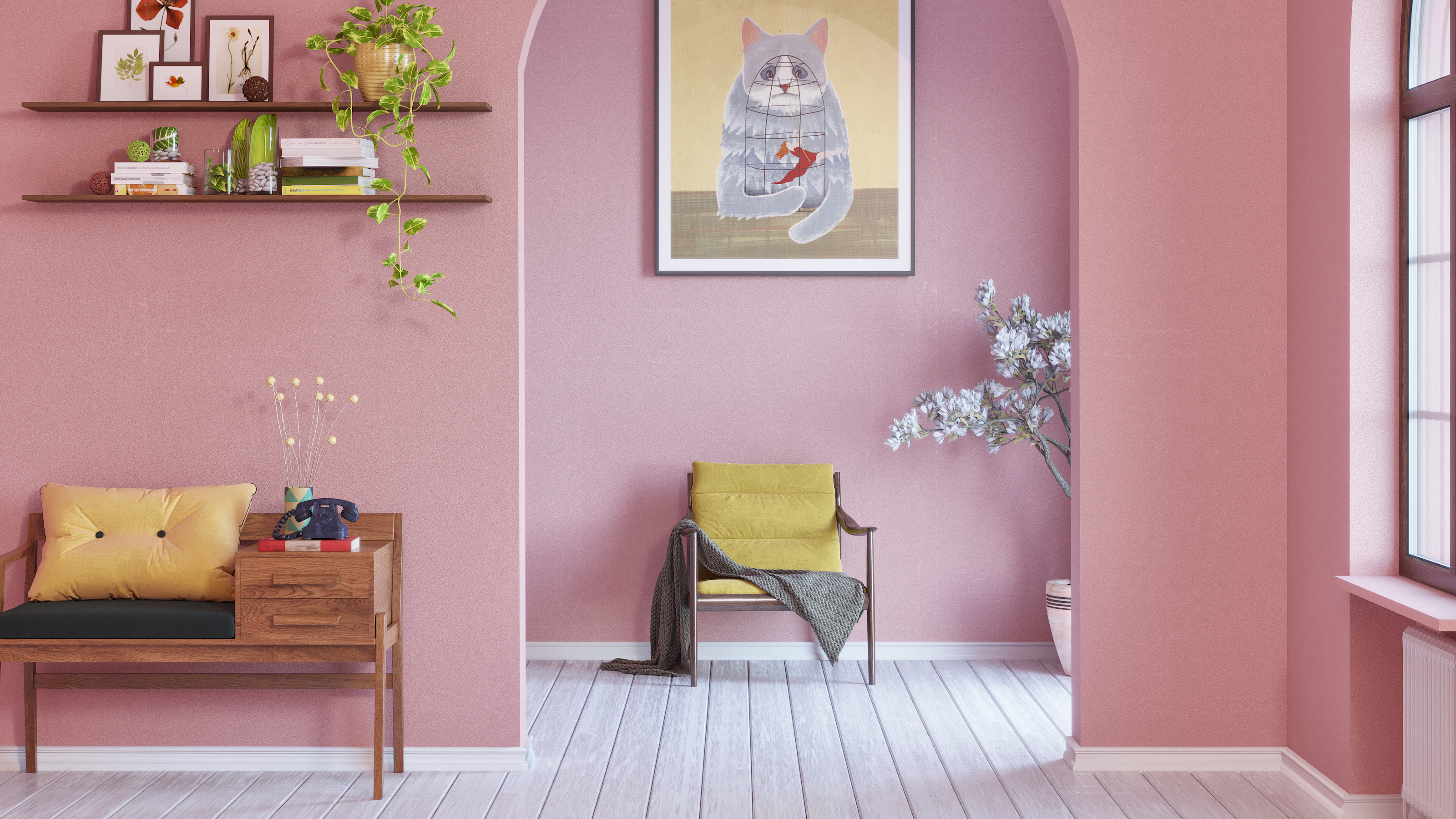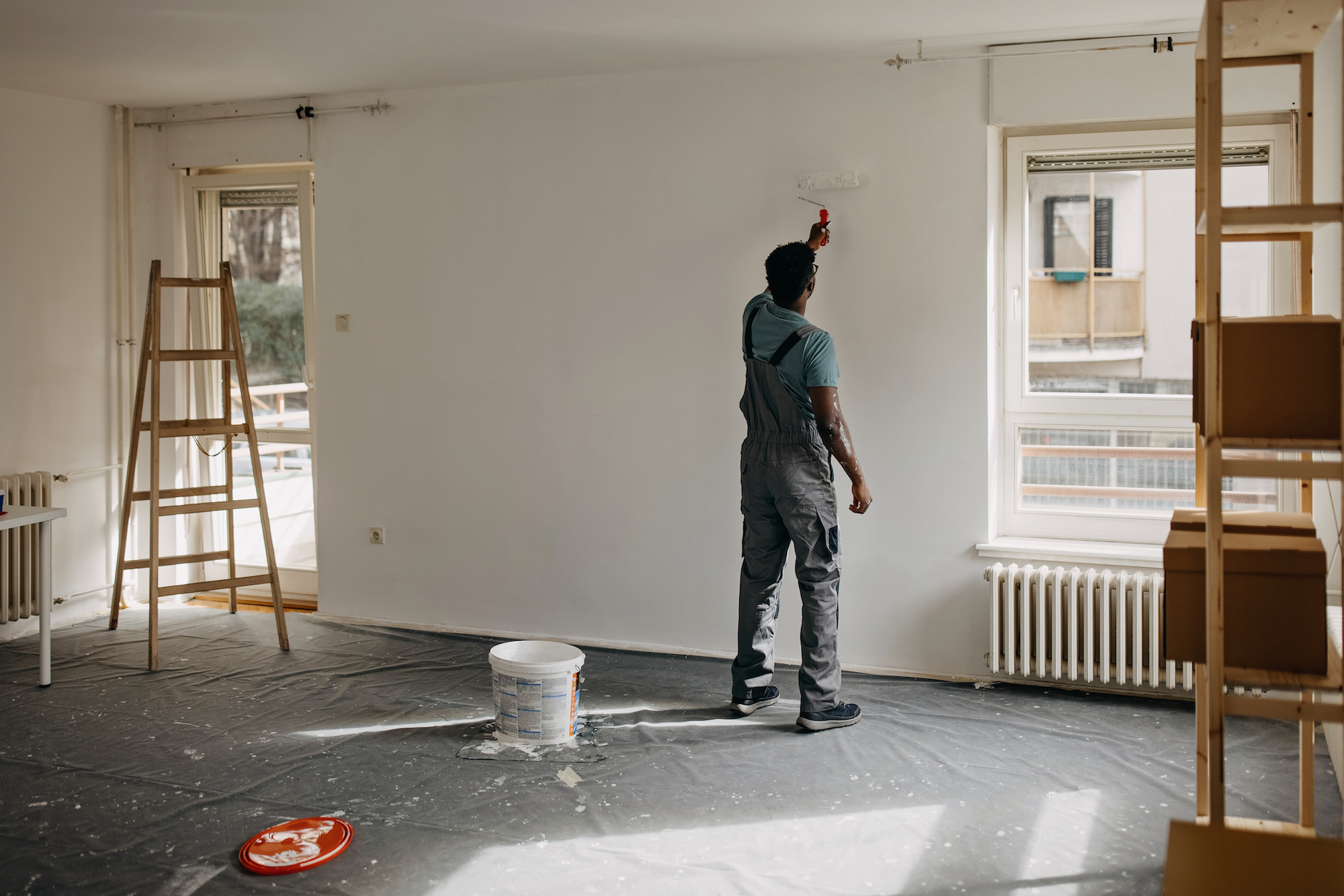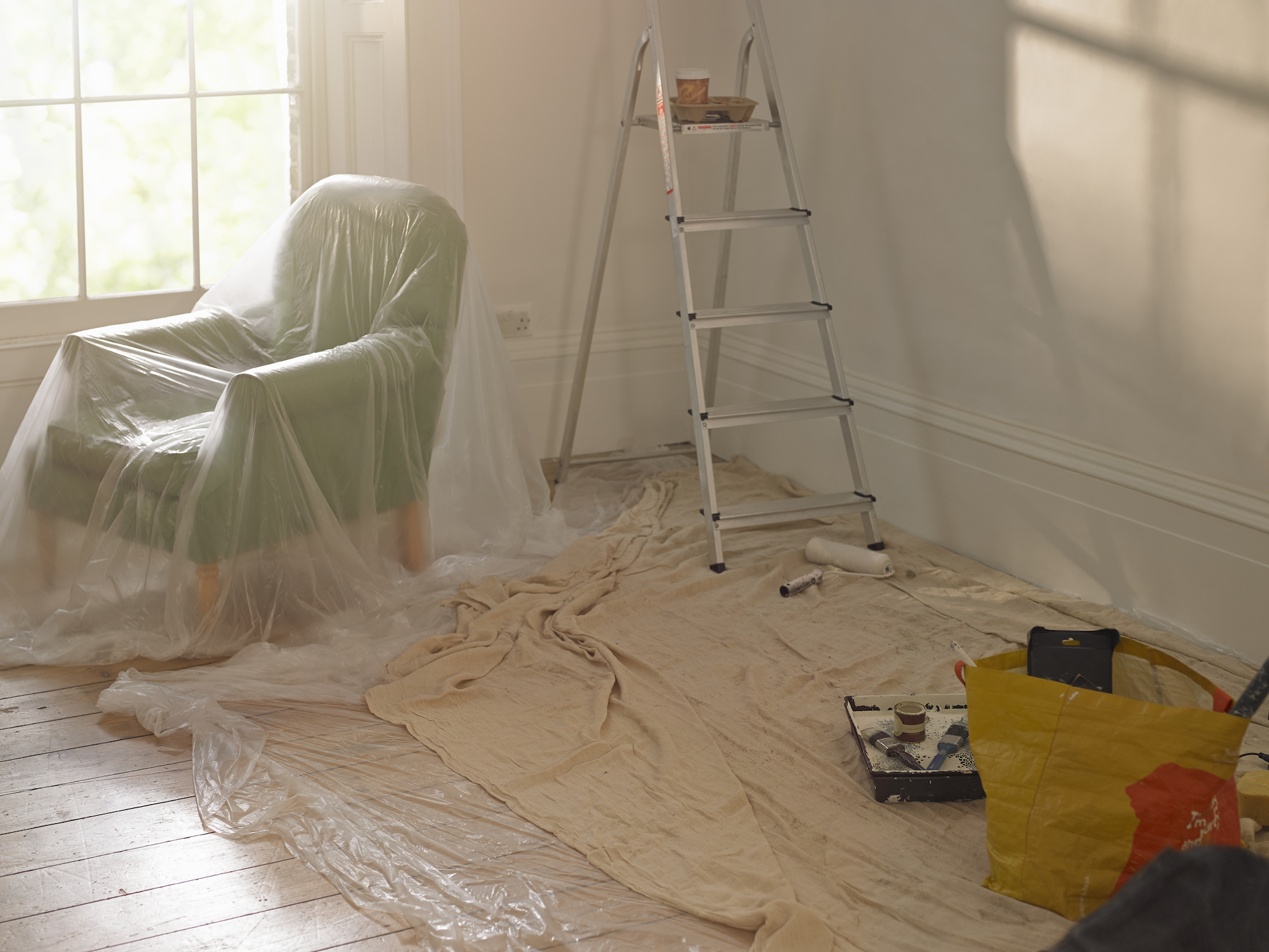How much does it cost to paint a room: Should you hire a pro or DIY?
Find out how much it will cost to paint a room, either yourself or by hiring a professional decorator, with this easy budget guide

Finding out how much it will cost to paint a room before starting this routine maintenance job will help you decide whether you can afford to get a professional in or will need to take the DIY route.
A common part of owning a house, this is a job many people want to tackle themselves, but how much more does it cost to get a pro in to take the hard work off your hands?
Whether you've replastered and need a good finish, or just want to refresh a room by painting a wall, get to grips with what's involved and how much it might cost so you can start DIY or hire a professional.
How much does it cost to paint a room?
While MyJobQuote states that an average room will cost £400 for a professional to decorate, the cost of painting a room will be influenced by a few important elements. These include:
- The quality and price of the paint
- The size, height and complexity of the room
- The condition of existing walls
Quality of paint
The type of paint you choose will naturally affect how much a decorating project will cost. While it might be tempting to keep costs down by choosing the cheapest paint (or at least a more budget-friendly option) these paints often need more coats to achieve a good finish, or they don't last as long when standing up to everyday wear and tear.
Ultimately it is up to your judgement to find the best wall paint for your wallet in the long and short term.
Style/size of room
A Georgian room with high ceilings, original coving and ornate skirting will take longer to paint than the average 2.1m-high room in a new home. Also navigating older rooms with nooks, crannies and beams will both take longer to paint and to properly mask off and protect. If more time is required to complete the task when hiring a professional, then this will inevitably increase the overall cost.
The condition of the walls
Painting new plaster requires a mist coat before the emulsion is applied. Similarly, if you are repainting a wall which has previously been wallpapered or is not in great condition, the preparation work required to get a smooth and flawless finish will be more labour intensive.
Preparation work like filling and sanding holes and scrubbing residue from walls should all be accounted for in your budget.

How do you calculate how much the paint will cost?
If you're taking on the job yourself, then paint and tools are the main costs. You will be able to roughly estimate the basic costs of painting a room using a fairly simple formula to find out how much paint you need.
Calculate the wall surface area by measuring the width and height of each wall. Then, multiply these figures for each wall. So, a calculation for a room 4x5m room with 2.1 high ceilings would look like:
((4x2.1) x 2) + ((5x2.1) x 2) = 37.8m2
This number can then be used alongside the type of paint you're wanting to use and the recommended number of coats. To use this paint from B&Q, 2.5L covers 35m2 and requires two coats. Plus it is advised to add on another 10% for waste. Therefore, three tins will be needed to paint the entire room.
Bigger tins are typically cheaper overall. Also consider if you are painting a ceiling alongside the rest of the room.
How much does it cost to paint a room yourself?
If you're looking into how to paint a room yourself to save money, remember that the paint is only one element of decorating a room.
Tools required for a good finish may include:
- Sandpaper
- Wall filler
- Sugar scrub
- Sponge
- Decent quality brushes
- The best paint roller
- Paint tray
- Masking/painters' tape
“It is important to wipe down walls prior to painting," explains Annie Sloan, colour and paint expert. "Use masking or painters’ tape to protect skirtings, light switches and window sills. Lay down newspaper or dust sheets over carpets; it may feel like a terrible chore but it’s much quicker than clearing up spilled paint."
Covering up furniture and flooring should be top priority and consider if you need a step ladder or extension pole, both of which can increase costs to do DIY.
All in, taking into account the room size and paint type above and the tools required, a DIY room painting job will cost around £210, not including the ceiling or skirting.

How much does a painter charge per day?
Painter/decorators charge around £150 - £200 a day (excluding VAT), although this might be more in London and the South East.
If you're having multiple rooms painted, a good decorator will time the first coat of one room while walls are drying in another to save time.
Obviously including the cost of labour, a professional job will amount to more overall, even if they can get trade discounts on paint and already own the tools. However, the end result will generally be of a much higher quality than a DIY painter can manage.
Are there any other costs to consider?
Painting skirting boards and other woodwork might not be included in a painter/decorator's initial quote, so be specific about what you expect to be completed.
The removal of radiators, wallpaper or damaged plaster will take time, so resolving these challenges before they arrive will save time on their day rate.
Get the Homebuilding & Renovating Newsletter
Bring your dream home to life with expert advice, how to guides and design inspiration. Sign up for our newsletter and get two free tickets to a Homebuilding & Renovating Show near you.
Amy is an interiors and renovation journalist. She is the former Assistant Editor of Homebuilding & Renovating, where she worked between 2018 and 2023. She has also been an editor for Independent Advisor, where she looked after homes content, including topics such as solar panels.
She has an interest in sustainable building methods and always has her eye on the latest design ideas. Amy has also interviewed countless self builders, renovators and extenders about their experiences.
She has renovated a mid-century home, together with her partner, on a DIY basis, undertaking tasks from fitting a kitchen to laying flooring. She is currently embarking on an energy-efficient overhaul of a 1800s cottage in Somerset.

